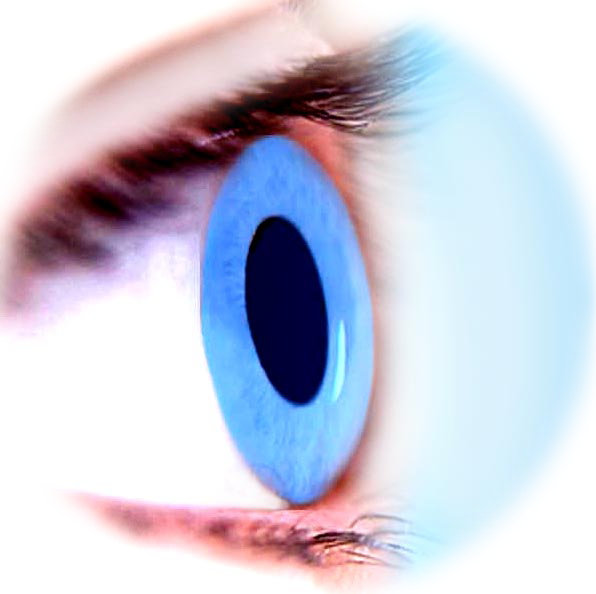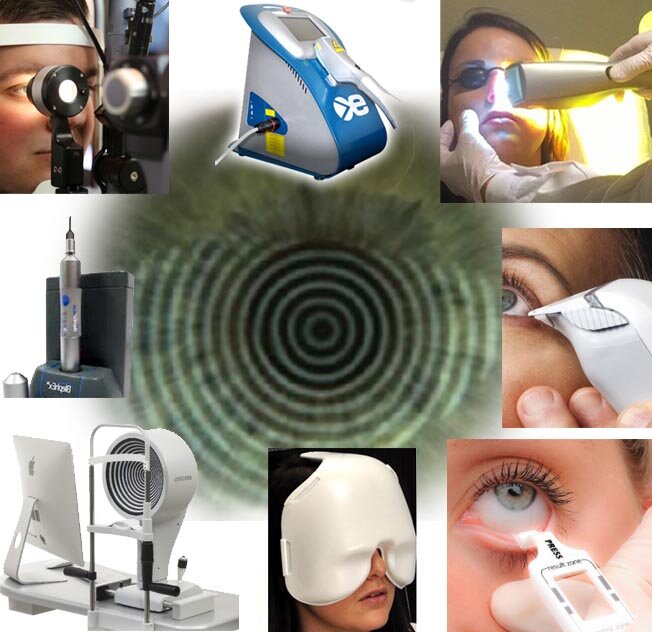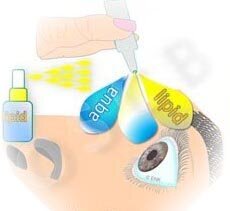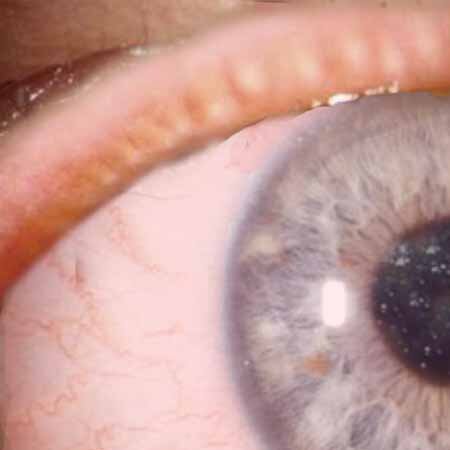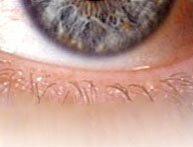Overview
Products for diagnostics and therapy
in Dry Eye Disease, Meibomian gland dysfunction (MDD) , Blepharitis
Devices & Consumables
Technical devices, consumables and more ... for diagnostics and therapy in the practice and clinic
Dry eye disease has a complex disease process (pathophysiology) that is influenced by numerous risk factors.
There are various examination techniques for diagnosing which causes are the most important in a specific patient. Today, the diagnosis is made possible or facilitated by numerous available devices.
Continuous research has provided new insights into the disease process. This has also led to new therapeutic options that allow specific and effective treatment for dry eyes.
Various providers offer devices, consumables and services related to the ocular surface and dry eye.
Tear Supplements
Tear Supplements and other eye drops
In dry eye disease, the constant moistening of the ocular surface by the tear film is disturbed. Therefore, liquid tear supplements on an aqueous basis are an important basis of therapy.
Thin liquid tear substitutes ... during daytime
For moistening of a mild dry eye, liquid watery tear substitutes should be given several times a day.
Thick liquid eyes GEL and ointments ... not only for the night
If the dry eye is advanced, viscous tear substitutes can keep the eyes moist for a longer time during the day.
In more severe dry eyes, thick viscous gels and ointments are also an often recommented lubricant for overnight use.
Tear supplements with special additives
Various aqueous tear supplements contain additives with special effects, from which one may expect more effective moisturizing or additional benefits
Aqueous tear supplements with oil
An oil additive can be advantageous, because in dry eyes there is typically an oil deficiency in first case, that results in increased evaporation of the tear water - therefore water and oil are often missing.
Combined aqueous tear supplements with oil addition are available for this purpose.
Apart from tear supplements, a basic therapy for the frequent oil deficiency due to obstruction of the meibomian oil glands inside the eyelids also includes regular eyelid warming treatment and cleaning of the eyelids.
Pure oil as a tear supplement
Oil supplementation is of enormous importance indry eye disease, since an oil deficiency is the first and most important cause of the dry eye in the vast majority of patients (approximately four out of five patients).
Initially there is often a lack of the oil layer on the tear film without a significant lack of water. Then it may make sense to try a pure oil supplementation first, e.g. such as a liposomal spray. This can often improve the symptoms quickly and significantly.
Herbal tear supplements
Herbal eye drops have a long tradition and can contain various valuable active ingredients that can have a nourishing and soothing effect on a stressed eye surface.
Many patients find such traditional active ingredients more natural than the products of modern pharmacology.
Homeopathic eye drops
In contrast to tear substitutes, homeopathic eye drops are typically not a substitute for a lack of tear fluid, but are considered medicinal products.
So they are not primarily used to replace, for example, water for moistening and ´lubrication´ of the eye surface. They contain active ingredients that are believed to have a healing and soothing effect on the symptoms of dry eyes in order to normalize the disturbed function again.
Meibomian gland disorder
MEIBOMIAN GLAND DYSFUNCTION (MGD) - Disorder of the meibomian oil glands in the eyelids
Blockage of the small meibomian oil glands in the eyelids (Meibomian gland dysfunction, MGD) is the first and most important cause of dry eyes in the vast majority of patients (approximately four out of five patients).
A lack of oil on the tear film leads to increased evaporation of the tear water and thus to the complaints of dry eyes.
Therefore, it is important to treat the clogging of the glands by regular warming treatment and cleaning the eyelids at home.
If this is not sufficient, innovative mechanized therapy devices in the ophthalmologist's practice allow effective new options for treating of dry eyes.
Investigation/ Visualization/ Diagnosis
LIPIVIEW - visualization of the OIL LAYER on the tear film
LIPIVIEW II INTERFEROMETER for the surface of the eye
For the diagnosis of the causative disturbance of the tear film, the exact measurement of the thickness of the lipid layer on top of the tear film by interferometry is of particular importance.
In addition, the oil glands inside the eyelids can be displayed with unmatched level of detail (meibography) directly at the point of care.
LIPISCAN - Meibomdrüsen Imager
LIPISCAN is a small device with a user-friendly design to make the fast, high-resolution display of the Meibomian oil glands inside the eyelids (meibography) available for every practice .
Therapy
BASIC therapy at home for dry eyes
In addition to tear supplements, basic therapy for dry eyes consists of heat therapy for the eyelids. This serves to liquefy the oil in the clogged Meibomian glands of the eyelids and to gently massage and clean the eyelids.
Because no drugs are used here, this is called physical eyelid therapy.
Apparative therapy at the ophthalmologist
There are various options available for specialized device-based therapy for meibomian gland dysfunction (MDD) .
Here, one or more steps of physical eyelid therapy are carried out in the ophthalmologist's practice with devices that can perform these tasks better and/ or faster (please see below).
LIPIFLOW - computer controlled automatic gland therapy
If eyelid therapy at home is not sufficient for severely blocked Meibom oil glands, a computer-controlled heating and squeezing of the clogged glands with the LIPIFLOW device can bring about a quick and effective improvement.
Intense pulsed light ( IPL )
Strong light therapy for meibomian gland dysfunction (MDD)
IPL is a light therapy with very intense light - visible white light from a flash lamp.
The flashes of light are applied to the skin area around the eye and can improve meibomian gland dysfunction (MGD), even in cases that previously appeared resistant to therapy.
EYELIGHT Low-Level-Light-Therapy (LLLT)
Using a face mask, colored light of lower intensity is emitted over a larger area of the skin in the cheek area and around the eyes.
LLLT can be effective for obstruction of the meibomian glands and also for chronic inflammation of the meibomian glands (hailstones, chalazia).
Lid-Hygiene
Care and hygiene of the eyelids
Healthy eyelids are important for a healthy eye. Disorders and diseases of the eyelids can lead to a dry eye - and vice versa!
Regular cleaning and care of the edge of the eyelid prevents diseases and is as important as brushing your teeth every day
Demodex infestation with chronic eyelid inflammation/ blepharitis
If persistent eyelid inflammation continues despite regular cleaning and care of the eyelids, there may be an excessive infestation with Demodex hair mites.
In this case, it can make sense to carry out a specific therapy to reduce demodex.
BLEPHEX - mechanical eyelid cleaning
With meibomian gland dysfunction (MGD), which is the most common cause of dry eye, there are typical deposits on the edge of the lid, that promote eyelid inflammation and dry eye disease.
Often these stubborn incrustations can not be completely removed by conventional cleaning at home. Then, a mechanical abrasive cleaning of the edge of the eyelid, with a special device in the practice of the eye doctor, can be a valuable aid.
ILUX - for mechanical physical eyelid therapy
Ilux is a handheld and portable device for warming and expressing clogged meibomian glands in the eyelid in the ophthalmologist's practice.
